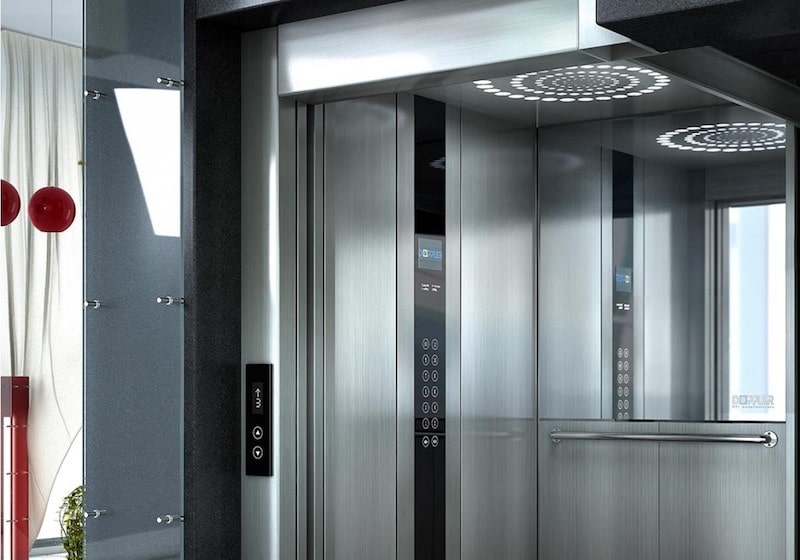We Maintain Lifts to the Highest Possible Criteria: Reliable Solution for All Lift Types
We Maintain Lifts to the Highest Possible Criteria: Reliable Solution for All Lift Types
Blog Article
Diving Into the World of Elevators: Typical Issues Dealt With by Various Lift Devices
As we browse via the vertical transport systems of contemporary buildings, lifts attract attention as a crucial part of our lives. Nonetheless, behind their seamless operation lies a globe of intricate systems that can sometimes experience obstacles. From hydraulic elevators to traction systems and machine-room-less designs, each lift type includes its set of typical concerns. Understanding these obstacles is critical for making certain the smooth performance of these important systems. Allow's explore the intricacies that underlie the operation of elevators and the prospective problems that can emerge, shedding light on the elaborate internet of lift mechanisms.
Hydraulic Elevators
Hydraulic elevators, usually preferred for low-rise buildings, utilize fluid stress to manage the motion of the lift automobile (lift repair companies). This device includes a hydraulic pump pressing oil into a cyndrical tube, triggering the elevator to relocate in the desired direction. While hydraulic elevators are recognized for their silent and smooth operation, they do feature their very own set of typical issues
One prevalent problem with hydraulic lifts is oil leak. Additionally, concerns with the control system, such as malfunctioning valves or a malfunctioning pump, can create disruptions in the elevator's movement.
Routine maintenance and prompt repairs are important to make certain the smooth performance of hydraulic lifts. By attending to these usual problems proactively, building owners can minimize downtime and make certain the security and performance of their vertical transportation system.
Traction Elevators
When taking into consideration upright transportation systems in buildings, another usual type besides hydraulic elevators is the traction elevator. Traction lifts operate utilizing a system of ropes and counterweights that move the elevator cars and truck by clutching onto the hoist ropes. This mechanism enables for smoother and much faster upright transportation compared to hydraulic systems.
One of the usual issues dealt with by traction lifts is rope wear. The consistent activity of the ropes within the traction system can result in damage in time, possibly triggering the lift to malfunction or come to be harmful for use. Routine assessments and maintenance of the ropes are important to guarantee the lift's appropriate functioning and safety and security.
One more issue that grip lifts might experience is connected to the control system. Issues with the control system can lead to issues such as erratic movement, hold-ups in action times, and even complete closures. Routine testing and upkeep of the control system are crucial to avoid such concerns and make certain the lift's reliability.
Machine-Room-Less (MRL) Elevators

One of the essential components of MRL elevators is the compact gearless traction maker that is installed within the hoistway. This machine successfully drives the lift we maintain lifts car without the requirement for cumbersome devices discovered in traditional grip lifts. In addition, MRL elevators normally use a weight system to stabilize the cars and truck, additional boosting their energy effectiveness.
Despite their advantages, MRL lifts might encounter difficulties connected to maintenance and repair work as a result of the confined area for equipment we maintain lifts installation. Availability for servicing elements within the shaft can be restricted, needing specialized training for technicians. Proper maintenance schedules and routine assessments are important to ensure the ongoing smooth procedure of MRL lifts.
Overloading and Weight Restriction Issues
Overloading and weight limit concerns are crucial worries in elevator operations. Lift makers style raises with specific weight capabilities to make sure guest security and tools durability.
When elevators are overloaded, it puts excessive pressure on the electric motor, cables, and various other parts, possibly triggering breakdowns or break downs. If they identify excess weight, security systems such as sensing units and overload sensors are in location to stop elevators from moving. In addition, going beyond weight limits can bring about enhanced power consumption and deterioration on the elevator system.
To reduce overwhelming issues, constructing supervisors need to plainly display weight limitations in lifts and enlighten passengers on the relevance of adhering to these restrictions - lift repair companies. Regular upkeep checks by qualified technicians can likewise assist make sure that lifts are operating within secure weight criteria. By attending to overloading and weight limit issues proactively, building proprietors can enhance elevator safety and security and efficiency
Electrical System Failings
Surpassing weight restrictions in lifts can not only lead to mechanical problems however likewise possibly contribute to electric system failures within the lift infrastructure. Electrical system failings are an important problem in elevator procedure, as they can create unforeseen closures, malfunctions, or even safety hazards.
Additionally, power surges or fluctuations in the electric supply can likewise disrupt the elevator's procedure, influencing its efficiency and safety. These electric disruptions can harm sensitive lift parts such as control panels, motherboard, or sensors, causing system failings. Regular upkeep and examinations are crucial to determine and deal with potential electric issues promptly, guaranteeing the efficient and secure procedure of elevator systems. By sticking to weight limits and conducting routine electric system checks, structure owners can reduce the risk of electrical failings in elevators.
Conclusion

Hydraulic elevators, commonly chosen for low-rise structures, utilize fluid pressure to control the activity of the elevator cars and truck.When taking into consideration upright transportation we maintain lifts systems in structures, an additional usual type apart from hydraulic elevators is the traction elevator. Traction elevators operate utilizing a system of ropes and weights that relocate the elevator vehicle by clutching onto the hoist ropes. Unlike traditional elevators that require a different machine space to house the equipment, MRL elevators integrate most of the components within the shaft, getting rid of the requirement for a devoted maker room.In final thought, elevators face typical concerns such as hydraulic malfunctions, traction system failures, and electrical system issues.
Report this page